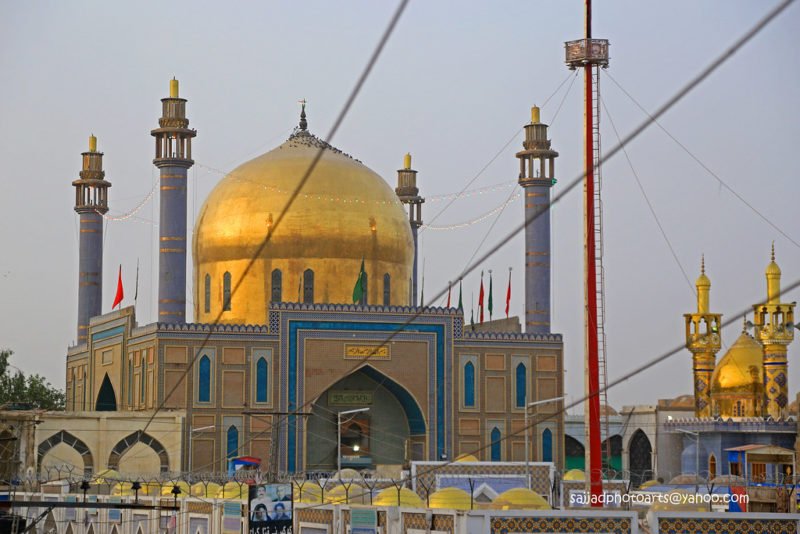Sindh’s social set-up in modern Pakistan

Sindh is one of the four main provinces of modern Pakistan having an area of 140,914 km and 47,886,051 population according to the census held in 2017. Others like it is a state of the federal parliamentary republic, more or less at a similar system of government with a directly elected Provincial Assembly in which the leader of the largest party or coalition is elected Chief Minister. In the country, provincial governors are appointed by the Federal Government of Pakistan whose tenure lasts for five years. It is comprised of a former Sindh Province, State of Khairpur and former Federal Capital Territory.
After the conquest by the British in 1843 Sindh had been part of the Bombay Presidency but on 1 April 1936 Sindh Division was separated from the Bombay Presidency and made into a province of British India. On the eve of independence and partition of the subcontinent, Sindh Assembly passed the resolution of joining the newly State Pakistan and became a province on 14 August 1947. Again the province was merged into the province of West Pakistan in October 1955 under the One Unit Policy but regained its status of the province after dissolution of the policy on 1 July 1970. Its status as province is continuing as provided in Pakistan’s constitution of 1973.

Cultural homogeneity of Sindh
The cultural homogeneity of Sindh that embraced both Hindu and Muslim speakers of Sindhi in the colonial period was severely disrupted by the partition of India and Pakistan in 1947. Most Hindu Sindhi speakers migrated to India, where they form a minority scattered among speakers of other languages. Their leading position in the urban society of Sindh in Pakistan was assumed by the immigrants known as Muhajirs, the Urdu-speaking Muslims who came from the town of India.
Initially, till January 1948, the Province Sindh unlike the experiences of Punjab or Bihar or, to a lesser extent, Bengal violence was not constitutive. There were remarkably few episodes of physical violence in Sindh. For example, three months after partition, when Acharya Kripalani visited Sindh as President of the Indian National Congress, noted, ‘There was only a slight exodus of the Hindus and Sikhs from Sindh. It did not suffer from any virulent fanaticism. To whatever faith the Sindhis belonged, they were powerfully influenced by Sufi and Vedanta thoughts. This made for tolerance.
Unlike the provinces of Bengal and Punjab, Sindh was not partitioned; it went in its entirety to Pakistan, thus avoiding the complete separation of religious communities and the tearing apart of families, homes, and linguistic and cultural communities that were the hallmarks of partition. Although the Karachi riot of 6 January 1948 was local and directed mostly at Sikhs from Punjab seeking refuge in Karachi, Sindh was engulfed by fear. As a result, the rich and prosperous Hindus of Sindh began to flee, more out of fear of persecution and violence rather than its actual experience.
Not only that the Hindu Sindhis who migrated to India came with misfortune. In India, the government policy regarding refugees was largely driven by the Punjab experience. This meant that refugees from other areas, such as Sindh and Bengal, where there had been relatively less violence as compared to Punjab, were viewed, both by the government and the general public, like cowards who had migrated unnecessarily). Refugees from Punjab were privileged over other refugees, in terms of both popular attitude and the government’s willingness to accommodate them and to allocate resources for their rehabilitation.
Social composition
The province of Sindh was not divided between India and Pakistan but the existing proportions between different religious and linguistic groups were changed by the arrival of hundreds of thousands of Muslims from India and the eventual departure of large numbers of Hindus and Sikh to India. The vast majority of refugees who arrived in Pakistan were from East Punjab. Those who arrived in Sindh headed for Karachi, which was now the capital of Pakistan, and the country’s foremost port and financial and industrial centre.
As a result of the influx of Muslim refugees from India and the concomitant exodus of Hindus and Jains, Karachi went through a dramatic demographic and social change. Within a few years of partition, Karachi had gone from having a predominantly caste Hindu population to having majority Muhajir population, while Sindhis became a minority both in the city and in the province. It increased the city’s population by extraordinary proportions. In the context both-the responses of local Sindhi Muslim politicians to the inflow of refugees and meaning as well as the theme of the word, “Muhajir underwent a change. After the outbreak of communal violence in early September 1947, followed by another in January 1948, Hindus and Sikhs started leaving Karachi in huge numbers.
The Hindu exodus was viewed with increasing anxiety on the part of Sindhi Muslim politicians because Hindus were seen as vital contributors to the economic and professional life of the city. And so initially the Sindhi authorities went to great lengths to slow their departure urging them to stay, but on the other occasions, especially after the episode of January 1948, they facilitated their departure. In the case of Muslim refugees from India too, at first, Sindhi authorities welcomed them but later attempted to check the entry of more refugees in opposition to the wishes of the Pakistani government. Local Sindhi politicians saw the newcomers not only as a huge economic drain on the province but also as catalysts for the Hindu exodus.



















